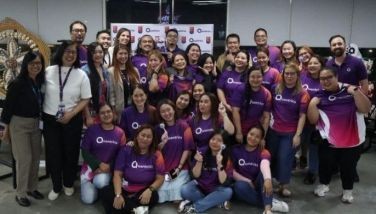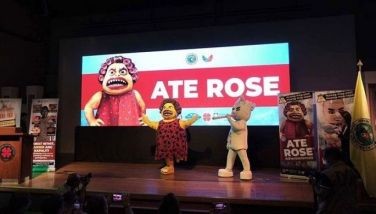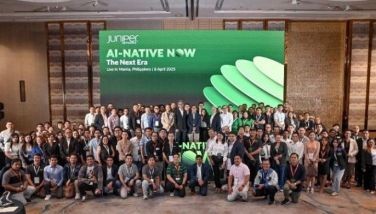Conversations with the past

In the last few days, I have had time to go over some documents of my father. These had been stashed away without any intention of reading them ever again. That happens with many documents of our life from birth certificates to marriage and death certificates. Others even keep old receipts and bank statements dating years back. There must be a reason for this apart from merely wanting a document to be there when it is wanted.
In our family, I had a brother who clung to these documents and brought them with him when he moved from house to house. He kept it, I suspect, because these belonged to my father with whom he had a
difficult relationship. Did he keep these because he had hoped to find some document that would prove that he was loved no matter how careless my father had been with his filial duties? Or that he is able to converse with him through these documents? I don’t really know. But because of that he became the custodian of the family’s records. When I decided I will write about the family, it was to these records that I turned to, both the important and unimportant.
It is not conversations about the little town from which I have my roots but conversations with what would make a livelier history.
* * *
Quite by chance, I realized the documents can mean much more. It was through my friend in Facebook, Imelda Cajipe Endaya that these documents found a way to me. I would try and piece together a life, a family, possibly a town and more ambitiously a country if I thought of a better use of the documents.
I knew of Imelda Cajipe Endaya, a writer, but casually until she posted the picture of a painting in my timeline. It was a painting by Felipe Roxas and captioned “House by a bridge in Paete,“ 1880. Pagrel Collection. Image from Gatbonton (ed), Art Philippines. It was a nice-looking house built like most houses at the time with strong Spanish influence. But what caught my eye was not the house but the bridge. I vaguely remember that the house I used to go to in Paete as a child was by a bridge. There are not many houses of that kind anymore.
When I googled for Felipe Roxas y Arroyo the entry from WikiPilipinas said that the painter was the brother of the more famous Felix Roxas who is considered as the first Filipino architect. Both were prominent members of the Roxas clan. Their father was Antonio Roxas and their mother was Lucina Arroyo. Today, one does not associate the Roxases with the tiny town of Paete. They are of the haciendas in Calatagan and Nasugbu. Why did Felipe Roxas paint this house in Paete? Was he there long enough to paint the house? It is also told that Jose Rizal visited the town to study woodcarving. The Paete of yesteryears must have been more significant than the history books tell us. We can only learn of what it really was when we refer to the stories of individuals and families that lived there through the years.
For art fanciers, it might be good to mention that he taught the famous Jose Maria Asuncion, whom he taught at the University of Santo Tomas. Roxas and Asuncicon traveled to Paris for further studies. This is one picture and what stories it tells.
* * *
Can you imagine what hundreds, thousands even millions of photographs and records can tell? Another friend posted I should look at what the Mormons have done if I was interested in this kind of history. The Mormon Church has bought birth certificates from the Catholic Churches all over the world. That would include birth certificates of Paetenos.
“It is one of the core tenets of Mormon faith, that the dead can be baptized into the faith after their passing. Baptism of the dead evolved from the beliefs that baptism is necessary for salvation and that the family unit can continue to exist together beyond mortal life if all members are baptized,†said the entry. Mormons trace their family trees to find the names of ancestors who died without learning about the restored Mormon Gospel so that these relatives from past generations can be baptized by proxy in the temple. For Latter-day Saints, genealogy is a way to save more souls and strengthen the eternal family unit.â€
“That religious belief of the Mormon Church in turn spurred the collection of baptismal certificates said to consist some 2.4 million rolls of microfilm containing 2 billion names that have been traced.
These are locked away “behind 14-ton doors in the Granite Mountain Records Vault, a climate-controlled repository designed to survive a nuclear impact that is built into the Wasatch mountain range, about 20 miles southeast of Salt Lake City.â€
So if you are interested in finding out who your ancestors were you can in fact refer to it through modern facilities.
“Copies of the original microfilms are freely available at the Family History Library in Salt Lake City, which is the main repository, and they can be ordered at smaller regional Family History Centers. The records include vital records (birth, death and marriage certificates), wills and probate records, land records, town or county records, church records and more.†I understand that the Cajipes did their own search of their family genealogy through the Mormon Church in White Plains in Quezon City.
Family searches can even de done online at FamilySearch.org. There different classifications of the databases depending on the information you seek.
- Latest
- Trending





















